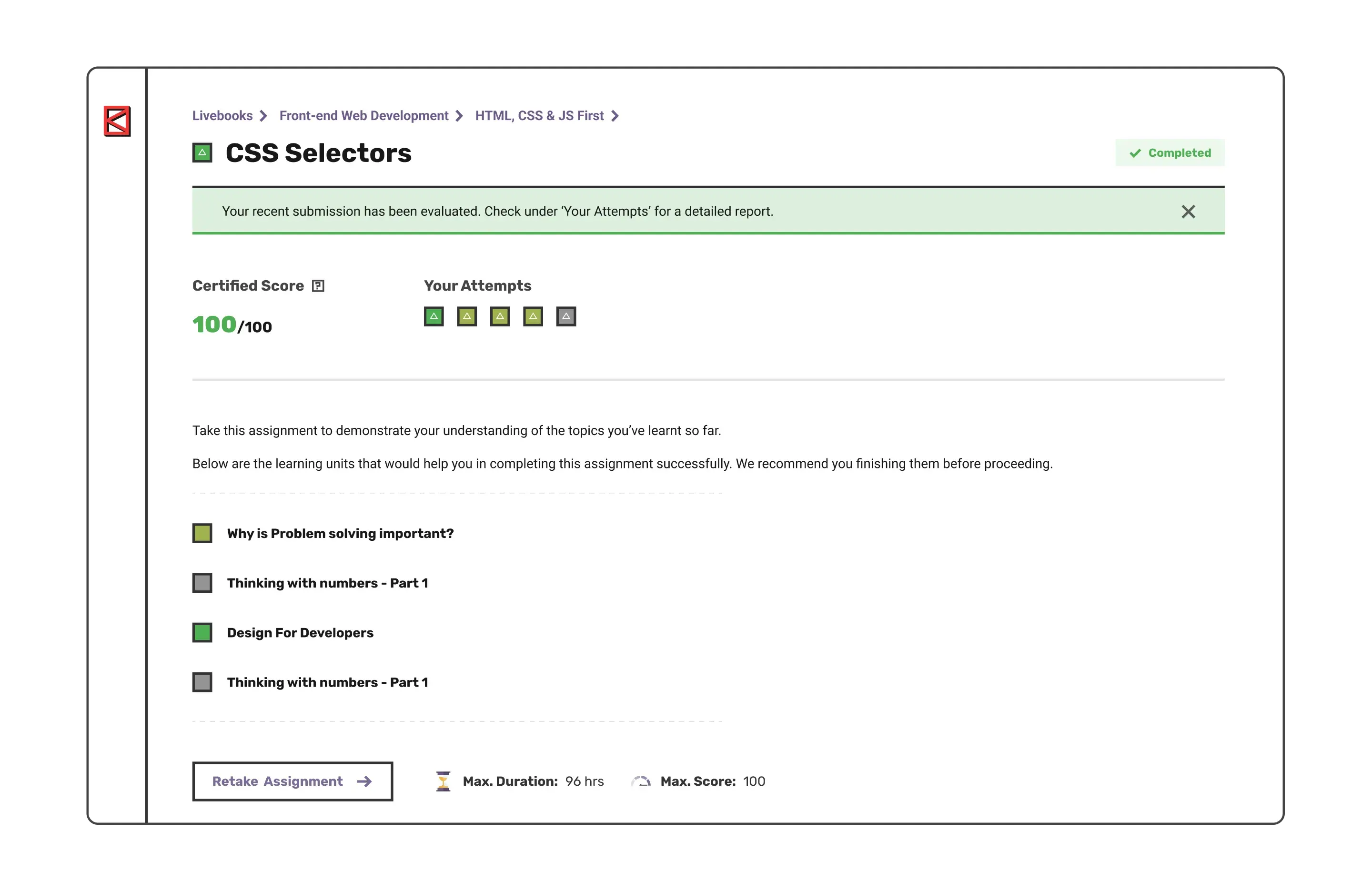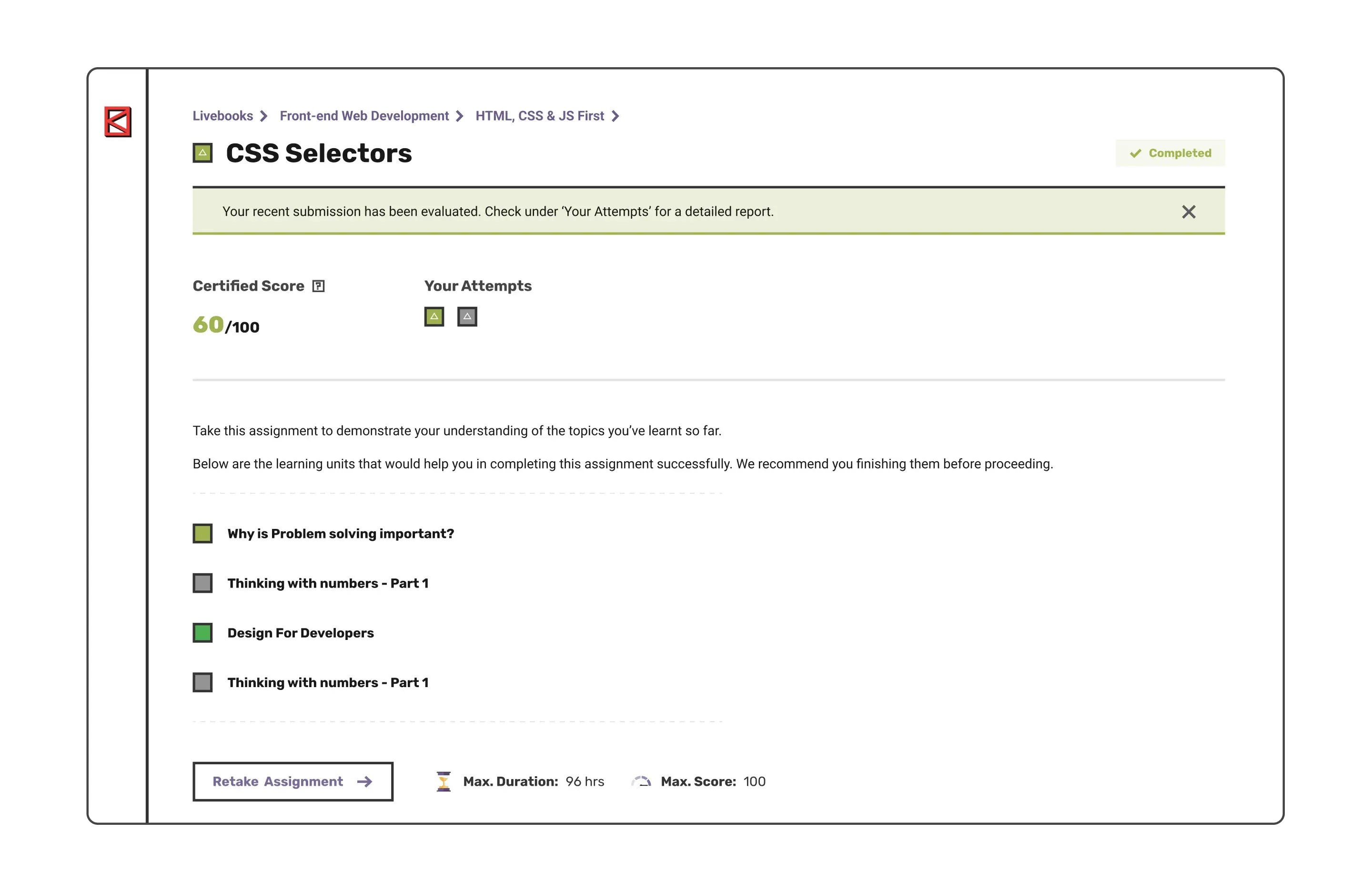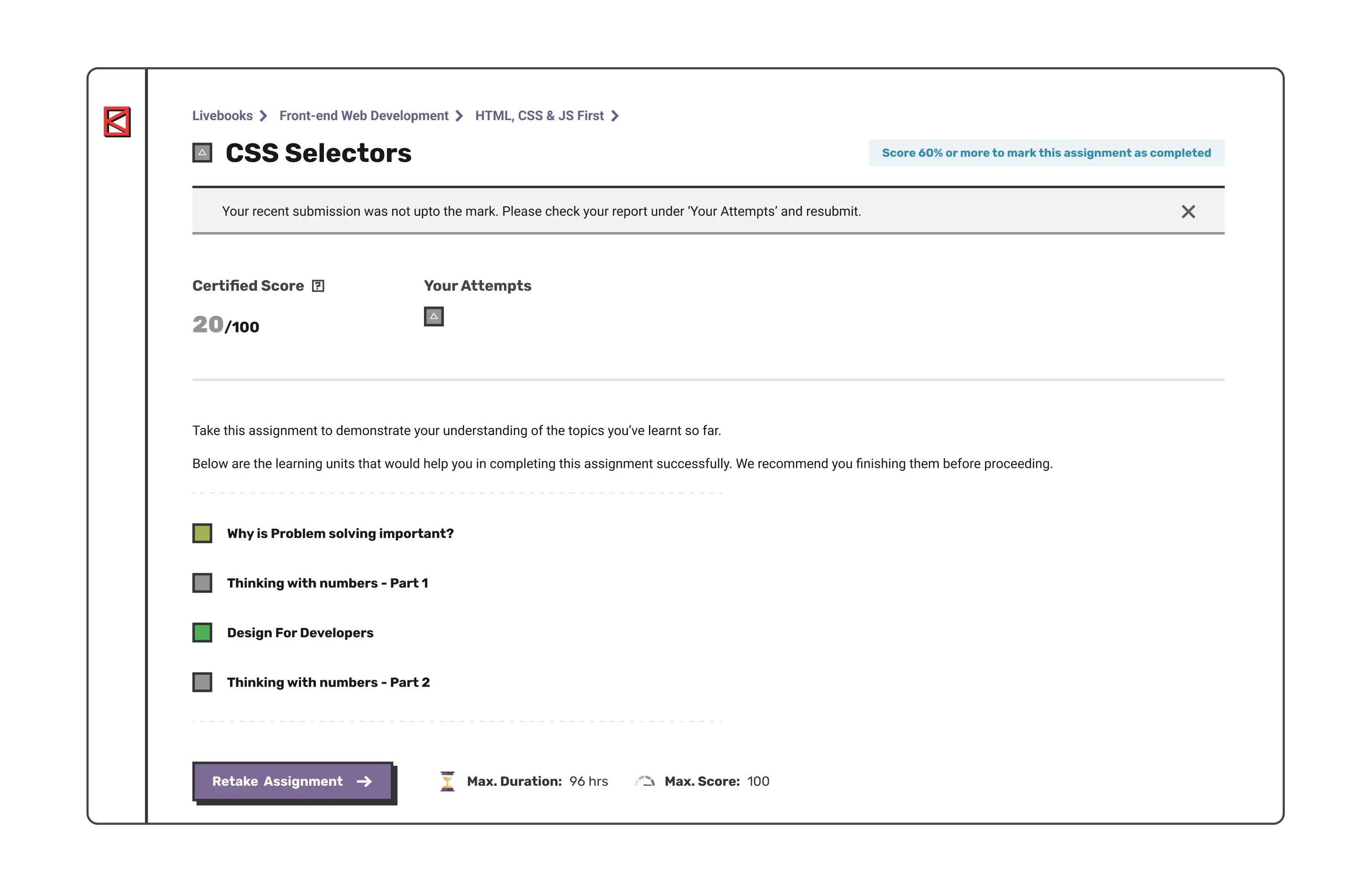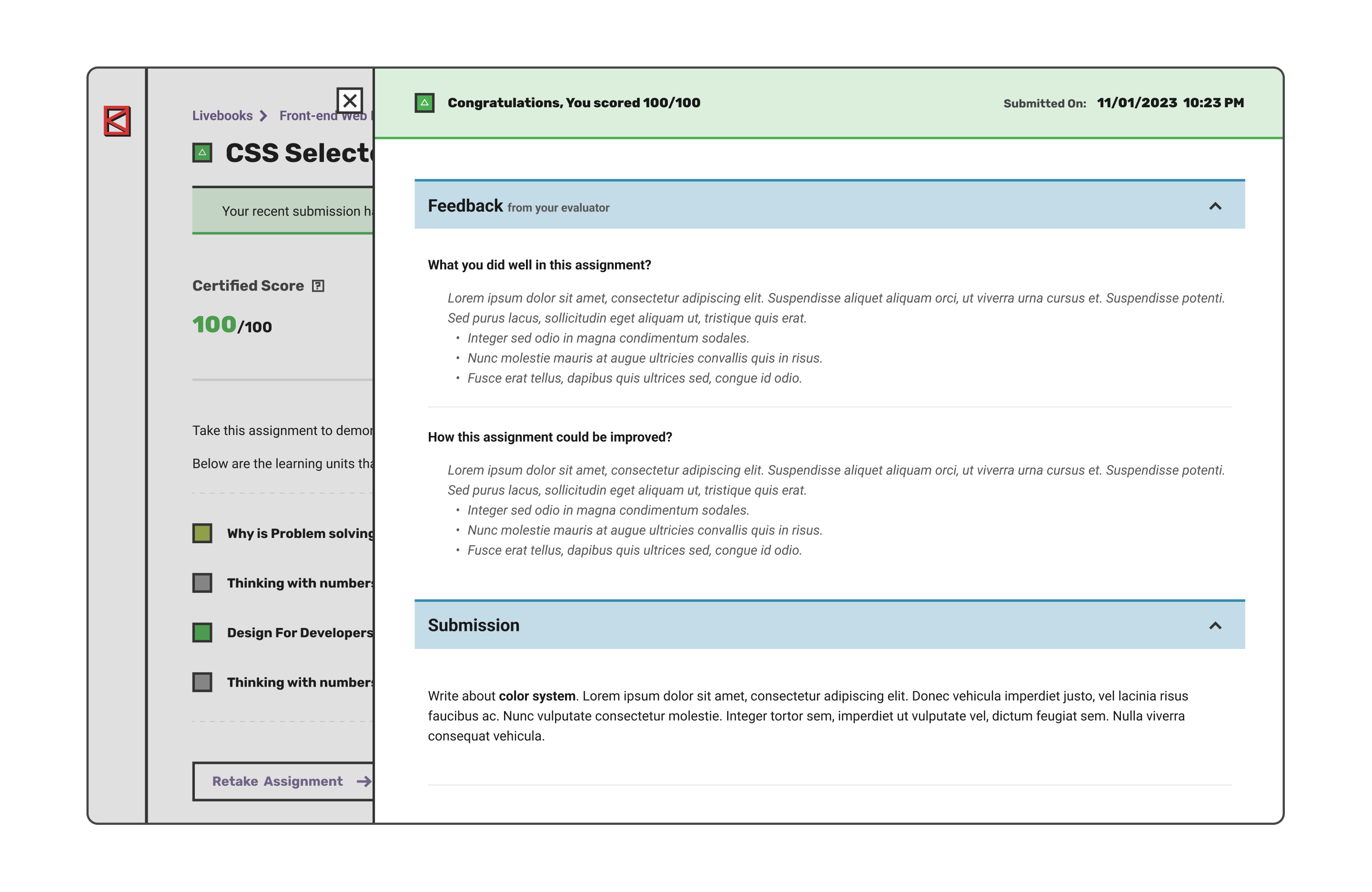
The Assignments

The Problem: When "Done" Isn't a Finish Line
The previous assignment process was a source of significant friction and anxiety. For students, submitting their work felt like sending it into a void.
- A Lack of Transparency: Once submitted, students had no visibility into their status. They were left wondering, "Did I pass? Is it being reviewed? What do I do next?"
- Disconnected Feedback: Feedback, when it arrived, was often late, scattered across different platforms, and difficult to connect back to the original work.
- No Path to Improvement: The system treated assignments as a final verdict. There was no clear structure to support re-submissions or encourage students to learn from their mistakes.
This created a "one-and-done" mentality, which was in direct opposition to Kalvium’s educational philosophy of mastery-based learning. We needed a system that would support the learning process itself.

My Role 👤
As the sole designer, I owned the complete design process, focusing on creating a system that was not only usable but also pedagogically sound.
- Translated insights from student and educator research into a clear design strategy.
- Designed and systemized a scalable feedback framework—the "Status Block" system.
- Owned the end-to-end visual and interaction design, with a focus on accessibility and clarity.
- Partnered with engineering and curriculum leads to ensure the solution was both technically feasible and pedagogically aligned.
- Drove post-launch iterations based on real-world usage to continuously refine the experience.
My Approach & Design Rationale
1. Research & Insight: Beyond Submission to Conversation
My initial interviews with students and educators revealed a core insight: an assignment is a conversation. Students are looking for a response, not just a grade. The key failure of the old system was that it was a monologue. This realization shifted my focus from just designing a submission flow to designing a visual feedback loop.
2. Design Execution: The "Status Block" System
I collaborated with curriculum leads to define how submission statuses would work. To make things more intuitive, every submission goes through clear, visual stages that help students track their progress.
We introduced status blocks, simple indicators that show where the submission stands. We outlined key states (Not Submitted, Needs Work, Well Done, Mastered) and aligned them with pedagogy goals. 🎯


Making Feedback Instantly Comprehensible To make these statuses instantly understandable, I designed a system using both color and shape. This provides at-a-glance clarity and ensures the design is accessible to users with color vision deficiencies. This cohesive system was so successful it was later adopted across all learning modules.


Closing the Loop: Actionable, Inline Feedback A status alone isn't enough. To complete the loop, I designed the interface to present detailed evaluator feedback directly within the context of the submission. Students no longer had to hunt for comments; the path from "what's my status?" to "what do I need to do?" became frictionless.

A System Built to Scale From the start, I designed this framework to be modular and scalable. The logic and UI components were created to handle everything from simple quizzes to complex coding challenges, ensuring a consistent experience across the entire Kalvium platform.

3. From Design to Delivery: Ensuring a Quality Launch
I cultivated a close partnership with the engineering team throughout the development cycle. My role was not just to hand off designs, but to serve as a constant resource, providing detailed specifications and interactive prototypes. This continuous collaboration was key to ensuring the final product was true to the design vision.
My ownership extended through launch, where I performed a final design QA to ensure the shipped product met our high standards for usability and polish, guaranteeing a seamless experience from day one.
Outcomes & Impact: Fostering a Growth Mindset
The launch of the Assignments app marked a significant improvement in the Kalvium learning experience.
- Fostered a Growth Mindset: By making feedback clear and re-submission an integral part of the flow, the app shifted student behavior from "submitting and forgetting" to "learning and iterating."
- Dramatically Reduced Confusion: The transparent status system eliminated student anxiety around their submission progress, leading to fewer support queries and a more confident student body.
- Created a Scalable Design System: The "Status Block" framework became a core, reusable component in Kalvium's design system, now used in other learning modules to create a unified and consistent user experience.
- Increased Engagement with Feedback: By making feedback accessible, timely, and actionable, we saw a notable increase in students actively using the feedback to improve their work.